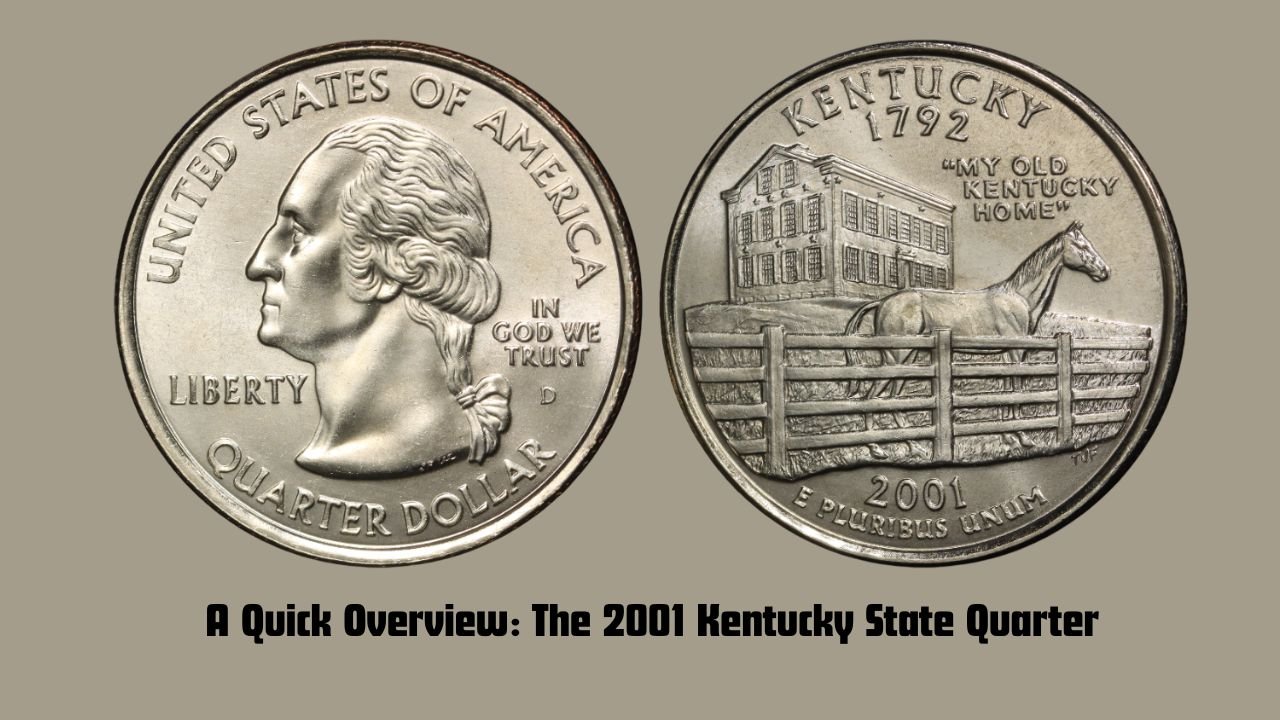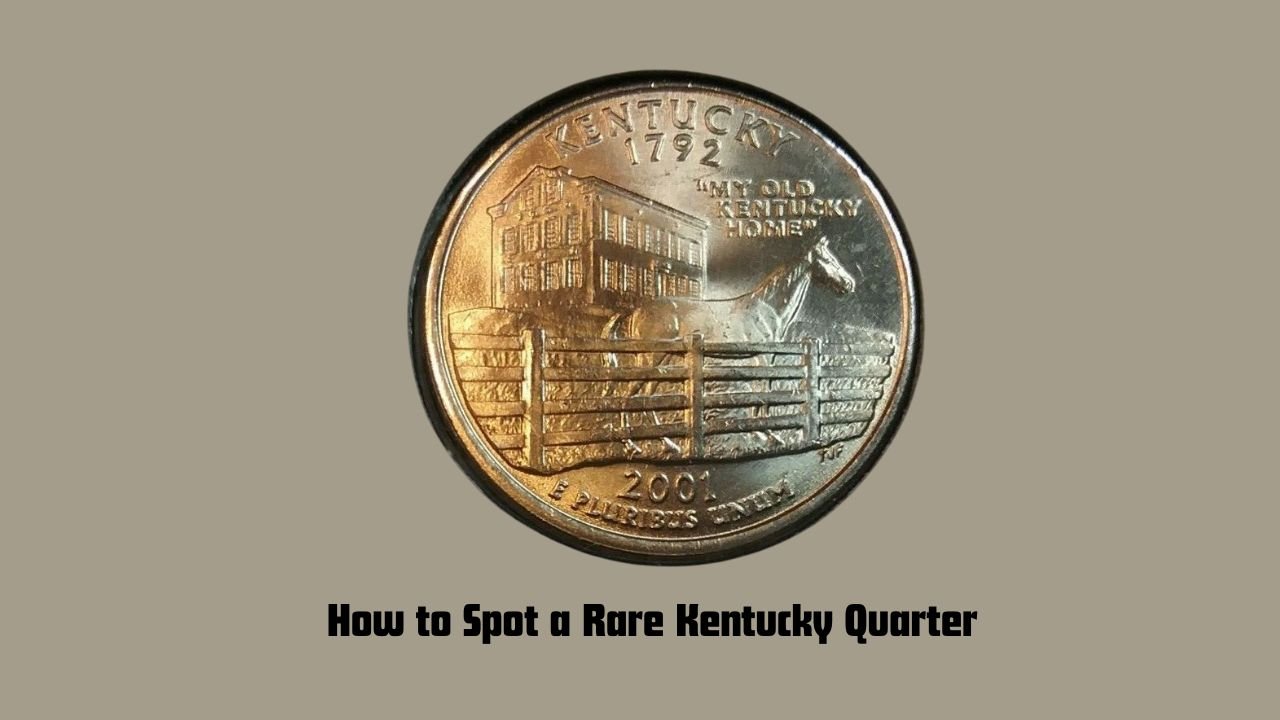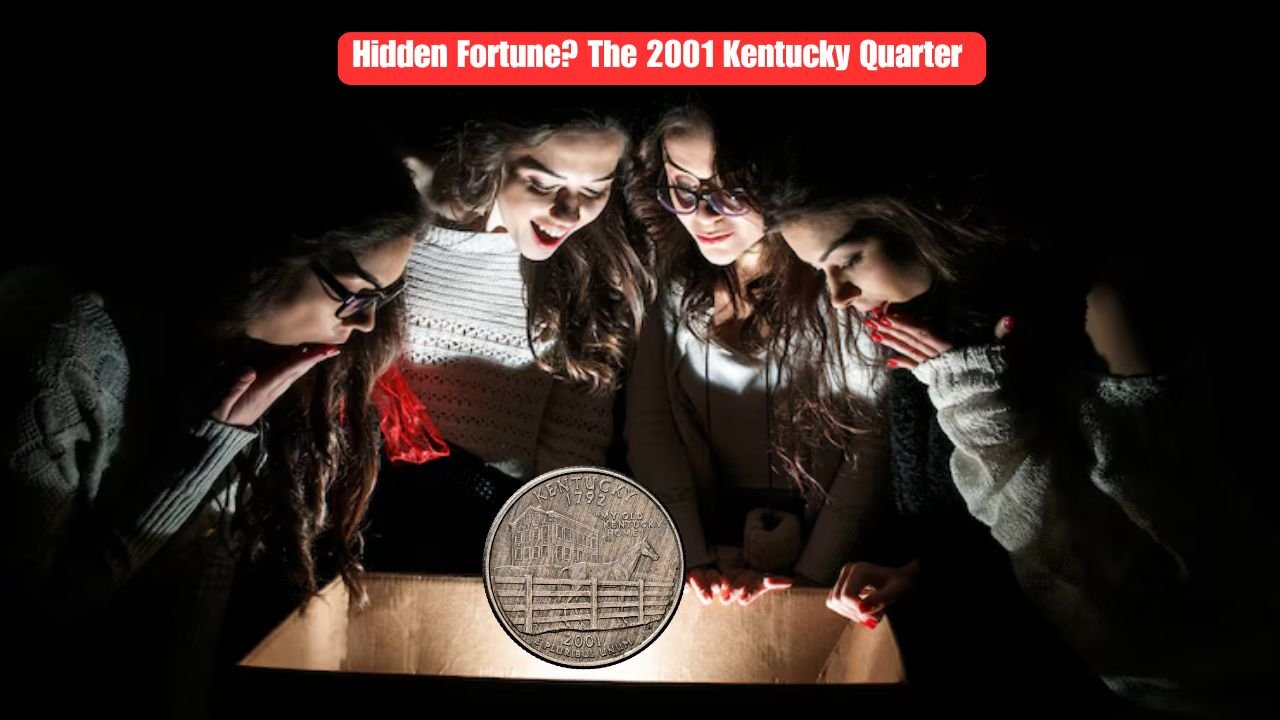Introduction:
The charm of discovering a rare and valuable coin in normal pocket change has captivated many. Among those, the 2001 Kentucky State Quarter has sparked discussions and speculations, particularly with claims suggesting it can be worth up to $500,000.
Imagine preserving a coin to your hand that’s worth 1/2 a million bucks — and not even understanding it. While it might sound too good to be true, some collectors trust that a unprecedented version of the 2001 Kentucky State Quarter could be well worth as a good deal as $500,000, if it possesses the right aggregate of errors and rarity.
In the world of numismatics (coin collecting), small minting flaws and unique characteristics can drastically growth a coin’s cost. So, earlier than you toss that spare exchange into the merchandising gadget or coin jar, it might be really worth taking a more in-depth look — in particular if you encounter a Kentucky area from 2001.
A Quick Overview: The 2001 Kentucky State Quarter
The Kentucky State Quarter turned into the 15th coin launched within the U.S. Mint’s 50 State Quarters Program, which ran from 1999 to 2008. Each quarter featured a design representing a particular state, and Kentucky’s celebrated its rich equestrian way of life and iconic horse farms.
Design Features:
Obverse (front): Traditional photograph of George Washington.
Reverse (back): A thoroughbred horse in the back of a fence in the front of the Federal Hill mansion (My Old Kentucky Home), with the phrases “Kentucky 1792” and “My Old Kentucky Home.”
The coin itself is distinctly common — hundreds of thousands had been produced by way of each the Philadelphia (P) and Denver (D) mints. But no longer all cash are created same. Some might also deliver minting mistakes, die varieties, or unusual finishes that cause them to relatively treasured.

Why Is a 2001 Kentucky Quarter Allegedly Worth $500,000?
Let’s get one thing directly: most 2001 Kentucky quarters are worth most effective 25 cents — perhaps a bit more if in uncirculated situation. But creditors and dealers are constantly hunting for rare sorts or mistakes coins, and that’s in which the hypothesis comes in.
Here’s what could doubtlessly make a 2001 Kentucky quarter well worth loads of thousands of bucks:
Major Minting Error
Coins with dramatic minting mistakes can sell for astronomical quantities. Some recognised valuable error types consist of:
- Double dies (in which design factors appear doubled)
- Off-center strikes
- Wrong planchet errors (struck on a exclusive steel or length blank)
- Die caps or broadstrikes
While no officially showed $500,000 Kentucky sector has bought publicly, collectors speculate that a super hurricane of rare error kinds on a 2001 Kentucky quarter — especially in uncirculated or mint-kingdom condition — could command a huge rate tag.
Wrong Metal Composition
Most Kentucky quarters are crafted from clad copper-nickel, but if a unprecedented one were by accident struck on a silver planchet, it would turn out to be a really rare mistakes coin. Silver planchets are heavier and have a different ring whilst dropped. If authenticated, the sort of coin might be worth lots — in all likelihood more.
Perfect Condition (MS-70 Grade)
Coins are graded on a 70-point scale by using offerings like PCGS or NGC. A Mint State 70 (MS-70) Kentucky area with a rare error might be nearly faultless — and extraordinarily valuable because of both rarity and situation. These are extremely hard to find, particularly from circulated cash.
Unique Double Die Obverse or Reverse
A double die is a type of mint error where the die used to strike the coin has a duplicated layout. If a Kentucky quarter has important doubling on the text, the pony, or the mansion, it could be a totally rare range.
How to Spot a Rare Kentucky Quarter
You don’t want to be a expert collector to look into your alternate. Here’s what to do:
Look for:
- Mint mark (P or D) — beneath “In God We Trust” on the obverse.
- Oddities — doubling, greater outlines, lacking letters, strange textures.
- Weight differences — popular weight is five.Sixty seven grams; silver coins weigh more.
- Edge mistakes — missing reeds or blank edges.
Tools You Might Need:
- A magnifying glass or jeweler’s loupe
- A virtual scale
- A right lights source
- Access to on line coin forums or databases (like PCGS or NGC)

Avoid Coin Scams: What’s Fact and What’s Hype?
There’s been plenty of buzz on social media and forums approximately the “half of-million dollar” Kentucky region. While it’s actual that some nation quarters with authentic mistakes have offered for hundreds, no legitimate sale or appraisal has documented a Kentucky area selling for $500,000 but.
Some of the hype comes from clickbait or speculative content. Still, it is amusing — and potentially profitable — to leaf through your change with a collector’s eye.
Other State Quarters That Have Been Valuable
The Kentucky sector isn’t the most effective nation area rumored to be worth a fortune. Others include:
- 2004 Wisconsin Extra Leaf Quarters
- 2005 Minnesota Doubled Die Quarters
- 1999 Delaware Spitting Horse Quarter
- 2001 New York Off-Center Strike
These cash have been confirmed to have identified mistakes kinds and feature bought for hundreds to heaps of bucks, relying on circumstance.
Where to Get Your Coin Appraised or Sold
- If you consider you’ve determined a treasured Kentucky zone:
- Get it authenticated by using a grading provider like:
- PCGS (Professional Coin Grading Service)
- NGC (Numismatic Guaranty Corporation)
- Check on-line marketplaces (eBay, Heritage Auctions) to evaluate comparable listings.
- Consult a local coin dealer or attend a coin display for expert recommendation.
- Never easy your coin — cleaning can harm the surface and lower its value.
Final Thoughts:
Could You Be Holding a Hidden Fortune?
It’s not likely — however not impossible — that a 2001 Kentucky State Quarter on your pocket could be worth $500,000. While most are just worth face value, mistakes coins and rare conditions may want to make certainly one of them an high-quality find.
Your satisfactory guess? Keep checking your alternate. Even if you don’t discover the half of-million-dollar coin, you would possibly nonetheless encounter a coin worth $50, $500, or maybe $5,000. That’s a pretty notable return on funding for something that value you simply 25 cents.
FAQS:
Is there virtually a 2001 Kentucky quarter worth $500,000?
There are no validated public sales at this price, but sure uncommon mistakes coins from this collection ought to fetch high fees.
What mint mark must I search for?
Check for “P” (Philadelphia) or “D” (Denver). Either may have errors, though no unique mint has been showed to have the $500,000 coin.
How can I inform if my quarter has a minting errors?
Look carefully at the design for doubling, missing factors, off-middle moves, or other oddities. Use a magnifier and evaluate with preferred pix.
Where can I sell a rare coin?
You can use certified public sale homes, online marketplaces, or coin dealers — however constantly get it graded first for maximum fee.
